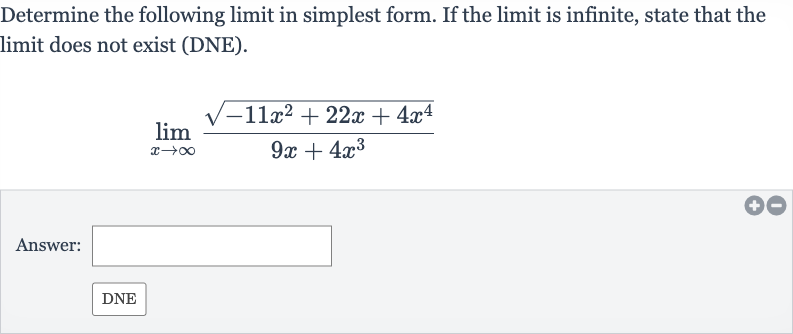Full solution
Q. Determine the following limit in simplest form. If the limit is infinite, state that the limit does not exist (DNE).Answer:
- Factor Out Highest Powers: We need to find the limit of the given function as approaches infinity. The function is . To simplify the limit, we will factor out the highest power of in the numerator and the denominator.
- Simplify Numerator and Denominator: In the numerator, the highest power of is under the square root, which is equivalent to when taken outside the square root. In the denominator, the highest power of is . We factor these out from the numerator and denominator respectively.
- Cancel Out : After factoring out the highest powers of , we have:
- Simplify Further: We can now simplify the expression by canceling out an from the numerator and denominator:
- Final Limit is : As approaches infinity, the terms with in the denominator (, , and ) approach . We can then simplify the limit to:
- Final Limit is : As approaches infinity, the terms with in the denominator (, , and ) approach . We can then simplify the limit to:The square root of is , so the limit simplifies further to:
- Final Limit is : As approaches infinity, the terms with in the denominator (, , and ) approach . We can then simplify the limit to:The square root of is , so the limit simplifies further to:As approaches infinity, approaches . Therefore, the limit of the original function as approaches infinity is .
More problems from Power rule
QuestionGet tutor help
QuestionGet tutor help
QuestionGet tutor help
QuestionGet tutor help
QuestionGet tutor help

